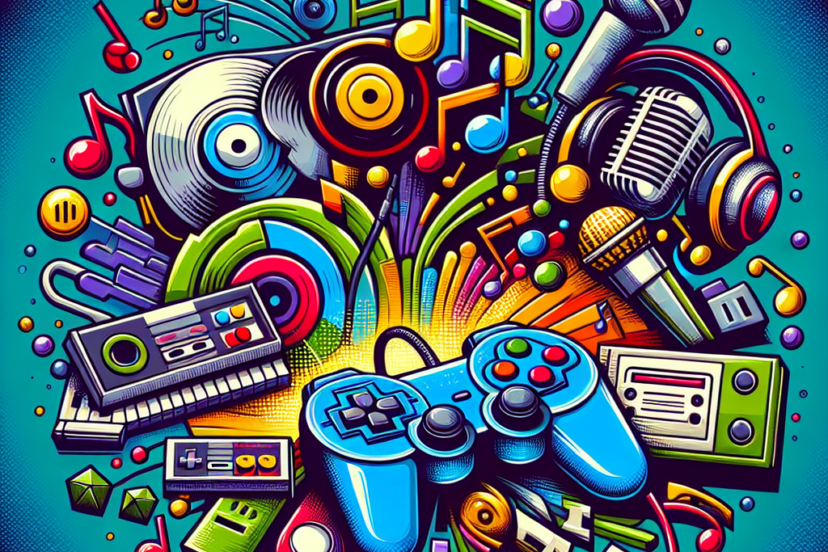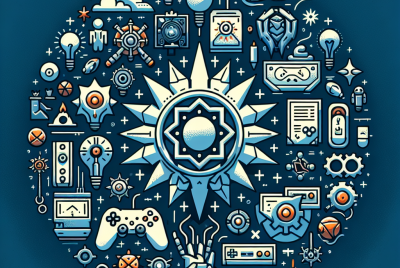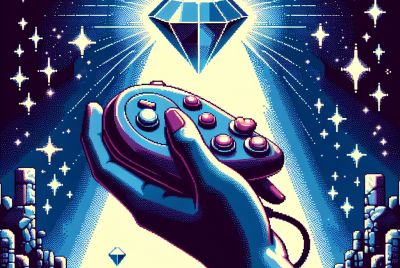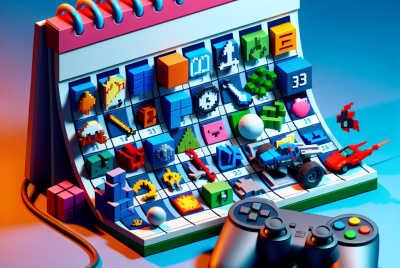Nostalgia Overload: Revisit These Iconic 90s Game Titles
Nostalgic Gaming: A Look Back at 90s Icons
The Golden Age of Gaming
The 1990s marked a golden era for video games that shaped the industry as we know it today. With the introduction of 3D graphics, CD-ROM technology, and the rise of home consoles, game developers began to explore new possibilities in gameplay, storytelling, and visual landscapes. Let’s take a stroll down memory lane and revisit some iconic titles that left a lasting impact.
Super Mario 64
A Revolutionary Leap
Released in 1996, Super Mario 64 was groundbreaking for its time. It was one of the first games to successfully transition a beloved 2D character into a fully immersive 3D environment. Players experienced freedom like never before, with expansive worlds to explore, power-ups to collect, and puzzles to solve. The game set the standard for 3D platformers and influenced countless titles that followed.
Gameplay and Mechanics
Players took control of Mario as he navigated through various worlds within Princess Peach's castle. Each level offered unique challenges, from flying through the sky to swimming in underwater realms. The intuitive controls allowed for fluid movement, jumping, and even wall-kicking techniques. The introduction of various power-ups, such as the Wing Cap, added another layer to the gameplay, giving players creative ways to tackle challenges.
The Legend of Zelda: Ocarina of Time
An Epic Adventure
When Ocarina of Time was released in 1998, it not only elevated the Zelda franchise to new heights but also redefined what a narrative-driven adventure game could be. Its mix of exploration, puzzle-solving, and combat created an unforgettable experience.
Time Travel and Storytelling
Players became familiar with Link, the game's protagonist, who was tasked with saving the land of Hyrule from the evil king Ganondorf. The innovative time travel mechanics allowed gamers to jump between young Link and adult Link, affecting the game world and accessibility to quests. With its rich lore, memorable characters, and an enchanting soundtrack, Ocarina of Time remains a timeless classic.
Final Fantasy VII
The JRPG Breakthrough
Final Fantasy VII, released in 1997, is often regarded as a pivotal entry in the JRPG genre. It introduced many Western players to the rich storytelling and character development that Japanese RPGs are famous for. The title’s transition to 3D and full-motion video added cinematic flair that captivated audiences.
Complex Characters and Themes
The story follows Cloud Strife, a mercenary, as he joins forces with a group of rebels to thwart the plans of the mega-corporation Shinra and save the planet. With characters like Aerith, Tifa, and Sephiroth, the game explored deep themes of identity, loss, and environmentalism, resonating with players on an emotional level.
Doom
The Birth of First-Person Shooters
Doom, released in 1993, was revolutionary in multiple ways. It is often credited with popularizing the first-person shooter (FPS) genre, combining fast-paced action with 3D graphics that felt groundbreaking at the time.
Gameplay Innovation
Players took on the role of a space marine battling through hordes of demonic enemies while navigating mazes filled with secrets and power-ups. The game’s multiplayer mode allowed players to connect over local networks, laying the groundwork for competitive gaming as we know it today. Doom's shareware distribution model also opened the door for indie developers, changing how games reached audiences.
Pokémon Red and Blue
The Birth of a Cultural Phenomenon
When Pokémon Red and Blue were released in the U.S. in 1998, they ignited a global phenomenon that still thrives today. These games marked the beginning of a franchise that spans video games, trading cards, toys, and an animated series.
A New Kind of Adventure
In Pokémon, players took on the role of a Pokémon Trainer tasked with capturing and training creatures known as Pokémon. The charm of exploring the Kanto region, battling Gym Leaders, and trading Pokémon with friends created a sense of community that fueled the franchise’s popularity and continues to engage fans to this day.
Street Fighter II
Revolutionizing Fighting Games
Released in arcades in 1991 and later for home consoles, Street Fighter II reignited interest in fighting games and laid the groundwork for competitive gaming culture. It introduced a cast of diverse characters, each with unique fighting styles and special moves.
The Competitive Landscape
Street Fighter II's multiplayer battles allowed friends to face off against one another, promoting rivalry and camaraderie in equal measure. The game's balance of skill and strategy captivated players, leading to the establishment of tournaments and a vibrant esports scene that still exists today.
Castlevania: Symphony of the Night
An Artistic Masterpiece
In 1997, Castlevania: Symphony of the Night transformed the franchise from a linear platformer into a sprawling “Metroidvania” experience, which focused on exploration and character growth.
Exploration and Character Progression
With its gothic aesthetics, intricate level designs, and RPG elements, the game allowed players to explore Dracula’s castle, uncover secrets, and defeat a diverse array of enemies. The introduction of a leveling system and the ability to collect different weapons and abilities offered players distinct playstyles and strategies.
Nintendo 64 and the Rise of 3D Gaming
Innovative Hardware
Nintendo’s 64-bit console, launched in 1996, was pivotal in establishing 3D gaming as a standard. With titles like Super Mario 64 and The Legend of Zelda: Ocarina of Time, the console demonstrated the potential of three-dimensional graphics and immersive gameplay.
Impact on Future Generations
While it didn't dominate the market like its competitor, Sony's PlayStation, the Nintendo 64’s impact on gaming is undeniable. Its control scheme and innovative game design are studied and revered even today.
Resident Evil
Defining Survival Horror
Resident Evil debuted in 1996, laying the groundwork for the survival horror genre that has since expanded into numerous franchises. Its combination of horror elements, puzzle-solving, and resource management kept players on edge.
Gameplay Mechanics
Set in a mysterious mansion filled with zombies and various monsters, players had to manage scarce resources, solve intricate puzzles, and survive gruesome encounters. This intense atmosphere and engaging gameplay brought a new level of fear to video gaming, inspiring countless titles that followed.
Gran Turismo
Racing Realism
In 1997, Gran Turismo redefined racing games with its emphasis on realism, car customization, and a racing simulator experience.
The Comprehensive Garage
With hundreds of cars and various real-world tracks, players had the chance to experience the thrill of driving high-performance vehicles. The game made car culture accessible to a wider audience, transforming racing games forever.
Chrono Trigger
A Timeless RPG Classic
Originally released in 1995, Chrono Trigger remains a pinnacle of video game design and storytelling. Renowned for its unique time-travel mechanic, branching storylines, and multiple endings, it provided players with an engaging experience.
Character Development and Visually Stunning
The game boasted a rich cast of characters, each with their own backstories and motives, which added depth to the narrative. Coupled with beautiful 16-bit graphics and a stunning soundtrack, Chrono Trigger captured the hearts of gamers, establishing itself as one of the greatest RPGs of all time.
Conclusion of the 90s Game Landscape
As we reflect on these iconic 90s game titles, it becomes evident how they’ve impacted gaming culture, shaped genres, and influenced the design of subsequent games. The nostalgia generated from these titles doesn’t just invoke fond memories; it’s a testament to their innovation and timeless appeal that continues to resonate with players of all ages today. Embrace the nostalgia and perhaps revisit these classics to relive the magic of the 90s gaming era.




